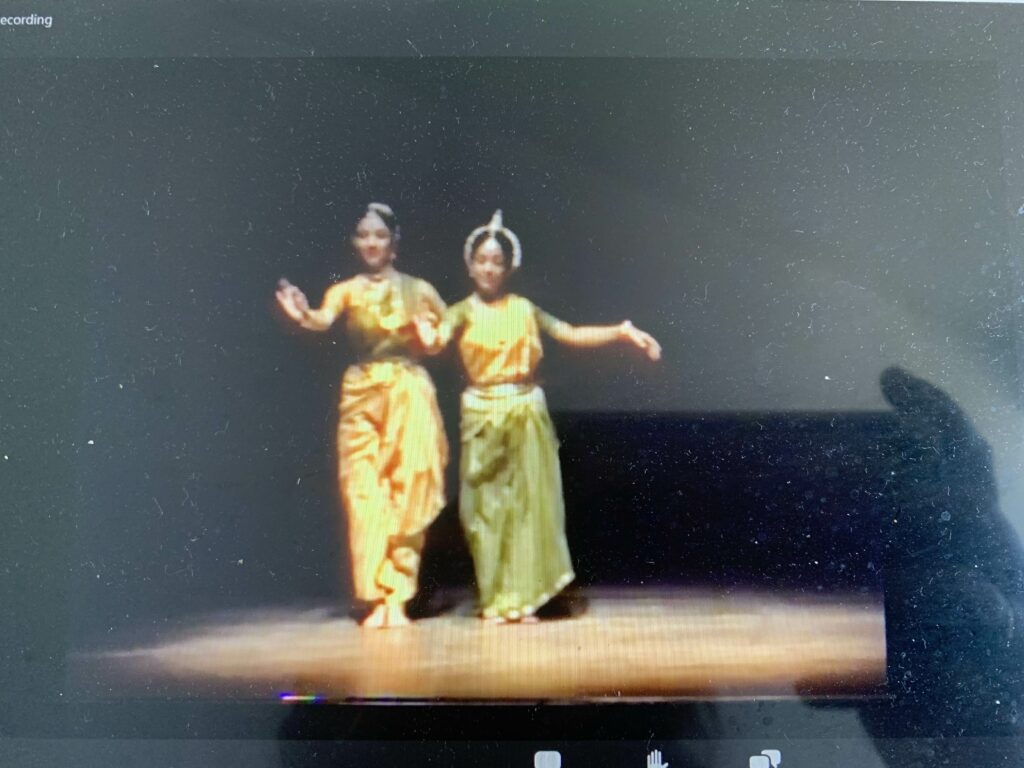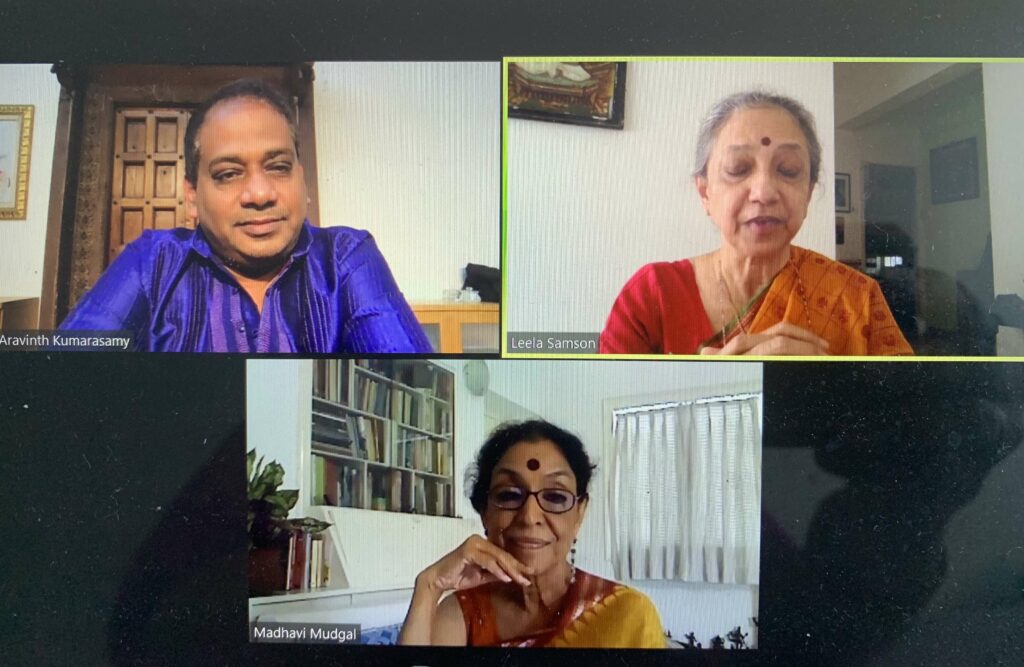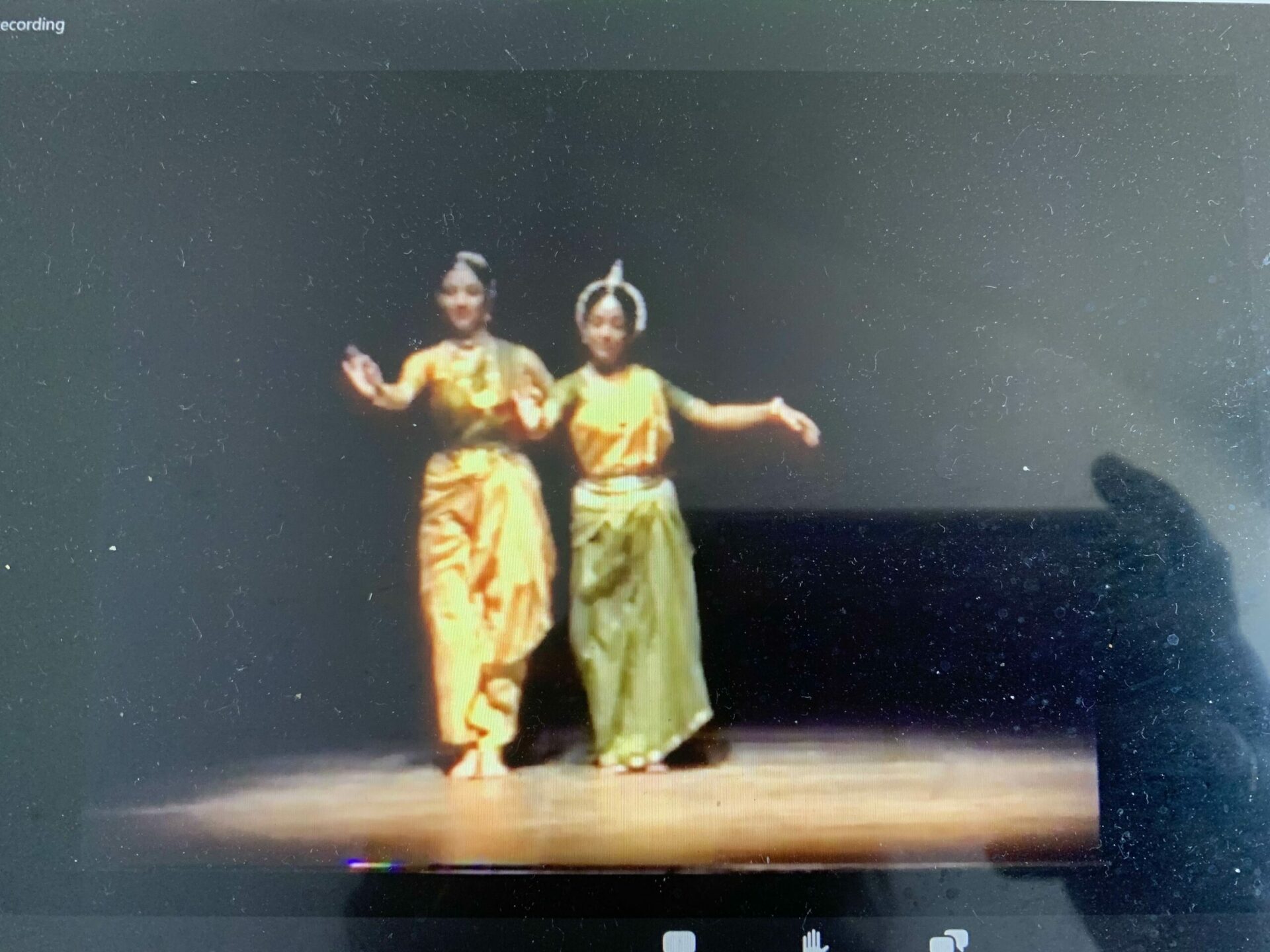
In a session entitled “Art of Collaboration” featuring two stalwarts of classical dance – Leela Samson and Madhavi Mudgal, they shared their early interactions in pioneering efforts in the genre of collaborative dance performances. This conversation was guided by Aravinth Kumarasamy who engaged them in an effortless dialogue of memories of their craft and long-held friendship and common goals in their dance journey. They both shared that they first came together in a TV series, where as they performed their dance form’s footwork, a realisation that a common ground could be found. They began work with certain Ragas which helped them explore a collaborative dance. Both reminisced of the fun times they had in 1975-76 in Delhi and Raag Hindolam & Raag Malkauns which opened up these possibilities. Leela akka shared that when collaborating, it was important to find similarities within the natural form of the artform which brings harmony yet allows for appreciation of the differences. She called their collaborative work – a “confluence” of ideas. Madhavi didi spoke about “Sanskriti” – a togetherness where the exploration was not a competition of ideas yet on reflection, this kind of jugalbhandhi had not been done before them. They also spoke about the importance of creating silences within a performance and the importance of staying true to ones’ own dance form and working on finding compatibility. Much credit to their early collaborations was given to Madhup Mudgal (brother of Madhavi didi), acclaimed Hindustani vocalist, who helped them with his compositions especially in the use of Thumris & Khayal and gave them latitude to explore the concept of Abhinaya in Thumri. Madhavi didi spoke of the difficulties of collaboration in the 1970s when they were very much on their own – no funding, handling all aspects of production & negotiating both the creativity and the practical aspects of a show. She noted the tremendous support from vocalist, O S Arun and his willingness to try new ideas. She credits the fact that as young artistes then, their openness to experiment and exploration helped. Reminiscing, Madhavi didi shared the challenges in finding space, the lack of resources for set design & finding affordable yet compatible sarees. Leela akka went on to explain how the “Bols” were negotiated in their collaboration – the precision needed and “journeying into the others’ space.” She emphasised the need to make effort to learn about the other dancer along with the artform without being judgemental and giving mutual respect to both the person and the style. Madhavi didi spoke about the influence of their Gurus who were alive then to critique their collaboration and she explained that their creative process embedded the inputs of musicians – e.g. Shubha Mughal (her niece), a young vocalist then would perform a Thumri in Khayal-style and they would let the singers sing and as choreographers they would listen, imbibe and then create their steps . They both emphasised the importance of retaining the essence of the genre of the music.

Another important aspect of choreography included the need to be sensitive to the audience watching as they would need to watch two dancers at the same time, thus many considerations would need to be evaluated when developing a duet. Leela akka put it astutely when she said, “There is no need to make it a “drama” – a duet is not a tennis match. The dancers should come very close yet not be merged together.” In the Q&A segment, there were many questions from dance students. Both artistes shared some key wisdom. They spoke of the importance of lessons in learning of the artform – as students, much is copied yet to become a serious dancer, the need to get deeper into each item happens when working on a collaboration. This kind of initiative helps a dancer realise how much you don’t know and the influence you can have on the other and the long-standing impressions that get created. They advised that in a collaboration, the compatibility of dancers is important. A willingness to compromise, to find a third area of “movement vocabulary” that speaks to each other. The dancer’s attitude towards the other should be based on a mutual understanding, not to be pressurised to do something & to give the collaborative experience – time to flourish. Dancers should have a thirst and quest to work with others. An overarching message from both the artistes is that our Indian dance traditions have certain structures which need to be respected and there is much to create within it. Over 80 participants were present at this engaging and inspiring session.










